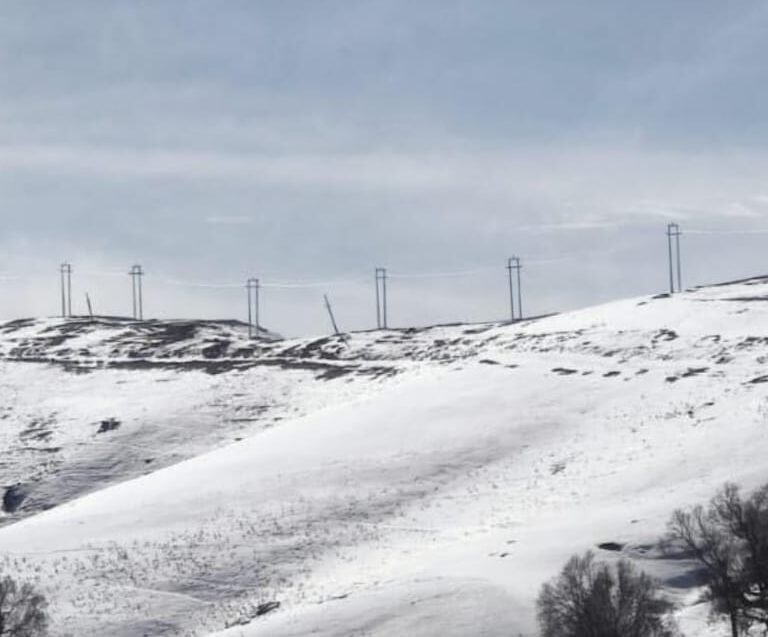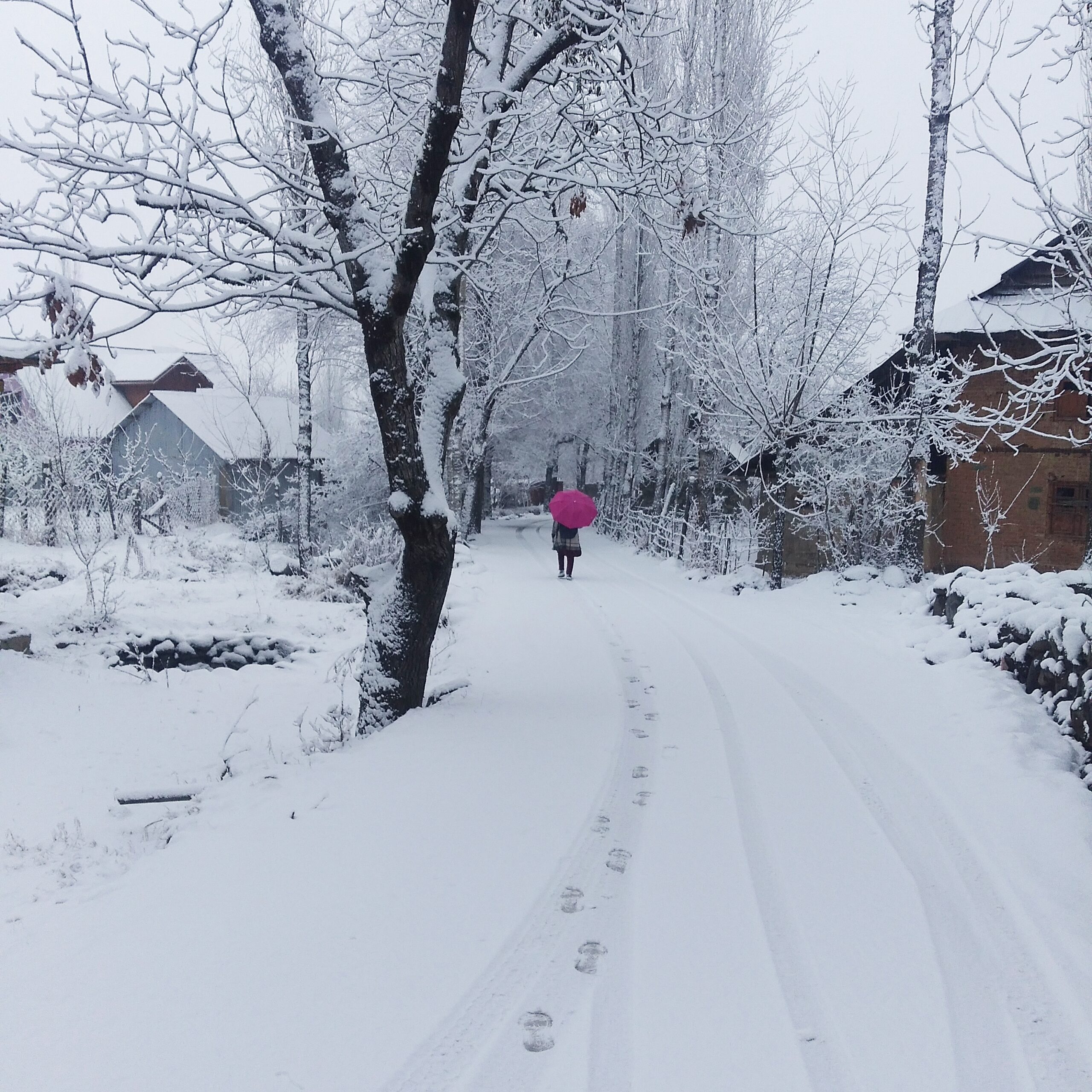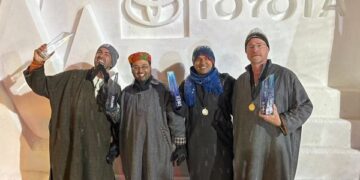The people of Kashmir revere Lal Ded under various names—Laleshwari, Lalyogeshwari, Lala, Lal, and Lalarifa. Scholars have long debated over the precise period of her birth. On analyzing these various views, the year 1335 AD appears to be the most plausible date for her birth.
It is likely that Lal Ded’s birth name was different. In Kashmiri, Lal means ‘belly,’ and Ded is an honorific term used for revered elderly women. It is said she often roamed half-naked, her large belly covering her private parts. Pt. Gopi Nath Raina, in his book Lal Vakya (1920) and The Word of Lalla Prophetess (1929), suggests her birth name was Padmavati.
It is also believed that during her lifetime, Lal Ded interacted with many prominent figures, such as the then prince Shihabuddin, saints like Syed Jalaluddin Bukhari, Syed Hussain Samanani, and Syed Ali Hamadani. These events are recorded around the Hijri years 748, 773, and 781 respectively, indicating that she was not only born before these years but was mature and enlightened by then.
Like her birth, Lal Ded’s death is also shrouded in uncertainty. It is only said that when she passed away, her body shone like pure gold. This event is believed to have occurred near Bijbehara, close to Anantnag (Islamabad). There is no reliable record regarding the final rites or cremation of her mortal remains. Legend has it that the saint-poet Sheikh Noor-ud-din Wali, born in 1376 CE, once suckled her mother’s breast after being reprimanded by Lal Ded, implying she lived at least till 1376 AD.
Lal Ded was born in Simpura village near Pampore, about nine miles from Srinagar, into a Brahmin farming family. According to the then prevalent customs, she was married in childhood to a reputed Brahmin family in Pampore. Her husband’s name is recorded as Sonpandit. Even from her young age, this proto-poetess harbored a rebellious spirit toward worldly bonds, which ultimately found expression in her deeply emotional and philosophical Vakhs (verses). She received her early education from her family guru, Shri Siddhamol, who introduced her to the secrets of religion, philosophy, knowledge, and yoga, thereby earning the reverential status of a Guru.
When Sonpandit noticed his wife growing increasingly detached, he requested Siddhamol to guide her towards worldly engagement. During a visit to her house, a profound discussion emerged among Sonpandit, Siddhamol, and Lal Ded. The topics were:
- What is the greatest light?
- What is the most sacred pilgrimage?
- Who is the most important relative?
- What is the most delightful thing in life?
Sonpandit answered: sunlight, the Ganges, a brother, and a wife.
Siddhamol offered: sight, knees (as the body’s journeying tool), pocket (symbolizing wealth), and health.Lal Ded responded: self-realization is the greatest light, curiosity is the holiest pilgrimage, God is the truest relative, and fear of God is the greatest delight.Both were stunned by the profundity of her response.
Even in childhood, Lal Ded displayed extraordinary traits. She often sat alone in deep thought, never drawn by the attractions of the world—so much so that her peers mocked her for her eccentricity (Kashmiri Zabaan aur Shayari, Vol. 2, p.113).
After marriage, she endured the bitterness and tyranny of her mother-in-law with great patience. Once, she went to fetch water. Her mother-in-law incited her son to spy on her. As Sonpandit approached with a stick, Lal Ded was returning with a water-pitcher on her shoulder. He struck the pitcher, which shattered, but the water remained suspended as if supported by a divine force. She used this water to fill utensils at home, and the leftover water she threw from the window created a pond that still exists, known as Lal Nag.
On another occasion, during a feast at her in-law’s house, her friends teased her that she would enjoy delicious food today. Lal Ded humbly replied, “Whether sweets or savory dishes are cooked, I am fated to eat stones.” Her cruel mother-in-law would place a stone beneath a layer of rice on her plate. This incident led to a local proverb in Kashmir: “Lali neelvath chali na janah”—“ Lal cannot change her fate of stones.”
By now, her spiritual insight had transcended the limitations of the physical world. She began wandering in search of inner truth, even discarding her clothes. She danced, sang, and roamed freely in bliss. She considered only those men to be real who feared God—and such men, she said, were rare. Hence, she felt no shame being naked before others. When she once spotted the great Sufi saint Syed Hamadani approaching, she tried to cover herself. Hamdani asked why she was ashamed now. Lal Ded replied, “O friend of God, until now, only women passed by. You are the first man with divine vision.”
On another occasion, she ran to a shopkeeper requesting clothes to cover herself, saying, “The saint who is coming recognizes me as I recognize him.” As Saint Hamadani arrived, she jumped into a nearby bakery’s tandoor. When the saint called out, “O Lalla, come out and see who is here,” she emerged clad in radiant, divine garments. This incident inspired a Kashmiri saying: “Aayi vaanas te gayi kandaras”—“She came to the grocer but went to the baker.”
Lal Ded had no children, a bond from which nature freed her. She herself said: .“Na pyaayas, na zaayas, na kheayam hend taney shonth”(Neither did I give birth nor partake in maternal food).
The hardships she faced in her household awakened in her a new vision of life. Her spiritual realizations blossomed into poetic expressions known as Vakhs, just like Kabir, who never used pen and paper. These verses were sung orally before being documented. Dr. Grierson, with the help of Pandit Mukund Ram Shastri, compiled 106 Vakhs, published in 1920 in Lalvakyaani by the Royal Asiatic Society, London. R.C. Temple further studied her sayings in The Word of Lalla, published by Cambridge University Press in 1924. Rajanak Bhaskaracharya translated 60 of her Vakhs into Sanskrit.
Many other scholars, such as Sarvanand Charagi, Anand Kaul Bamzai, Ramju Kalla, Jia Lal Kaul Jalali, Gopi Nath Raina, Prof. Jia Lal Kaul, R.K. Wanchoo, and Nand Lal Talib, have contributed significantly to preserving and translating her work. Sarvanand Charagi translated 100 Vakhs into Hindi under Kalam-e-Lalarifa, Anand Kaul Bamzai 75, and Ramju Kalla published 146 Vakhs in Amritvani. Renowned writer/translator Dr.Shiben Krishen Raina collected around 180 Vakhas and published them in a collection printed by Bhuvan Vani Trust Lucknow(1983)
Lal Ded’s Vakhs are mostly in free verse with rhythmic cadence. Her philosophical insights reflect influences of Shaivism, Vedanta, and Sufism. When she emerged, Islam had already entered Kashmir as a theological system. Amidst religious dogmatism and socio-political unrest, Lal Ded rose above sectarian divisions and voiced the universal truth in the language of the common people. Her mystic vision was deeply personal: “My guru whispered a secret—turn away from the outer and seek within. Since then, my soul has danced naked.”
She had attained a state beyond ego and duality. She saw no difference between self and other, between honor and insult. Her realization of the Self as Shiva was supreme:
“Let people insult or mock me—
I shall never harbor ill in my heart.
When my Shiva has showered grace,
Why should I fear what others think?”
Shaken by social contradictions, her inner being was stirred:
“I saw a wise man dying of hunger,
His body withered like autumn leaves.
I saw a fool beating for stealing food,
And my soul, disturbed, walked away.”
Her understanding of Advaita (non-dualism) matched that of Shankara. She found God not in temples or rituals but within herself:
“I searched for Him in the world—
Day and night, I wandered.
At last, I found Him in my own home—
And from that day, my true path began.”
She opposed religious hypocrisy and criticized both Hindus and Muslims who strayed from true piety. For Lal Ded, religion meant purity of heart.
“Your face is beautiful; your heart is like stone—
Where is the essence in that?
You read and write till your hands are sore—
But you have not removed the darkness within.”
Lal Ded’s poetry is a blend of philosophical depth, poetic beauty, and spiritual universality. Her expressions use metaphor, paradox, suggestion, and symbolic imagery rooted in everyday life. Most of her Vakhs evoke the tranquil Shanta rasa (aesthetic mood of peace).
Lal Ded’s language marks a milestone in Kashmiri literary history. Though some consider Shitikantha’s Mahanaya Prakash the first Kashmiri text, its language is far less Kashmiri than that of Lal Ded’s verses. Her language is Sanskrit-rooted but also contains Persian and Arabic elements. She used Sanskrit words in original or slightly modified forms: prakash, teerth, anugrah, karm, moorkh, manushya, shiv, .updesh., .geeta., .gyaan., etc. Persian-Arabic words include. sahib.,. dil., .jigar., .mushk., .gul., .bagh., .kalma., .shikar., etc.
There is no significant shrine, memorial, or temple dedicated to Lal Ded in Kashmir. Perhaps she transcended such earthly symbols. She came as a divine emissary and merged silently with the Infinite—beyond life and death:
“For me, birth and death are alike.
No one dies for me—
Nor shall I die for anyone.”.
Lal Ded ranks among the greatest spiritual luminaries of the world. She had attained enlightenment during her lifetime and entered the abode of God. For her, life held purpose and death lost its dread. She loved God wholeheartedly and found Him within herself.
Kashmir’s great Sufi saint Sheikh Noor-ud-din Wali, also known as Nund Rishi, offered the most fitting tribute to Lal Ded:
“That Lalla of Padmapore drank the nectar divine—
She was our incarnation.
O Lord! May I be blessed as she was!”








